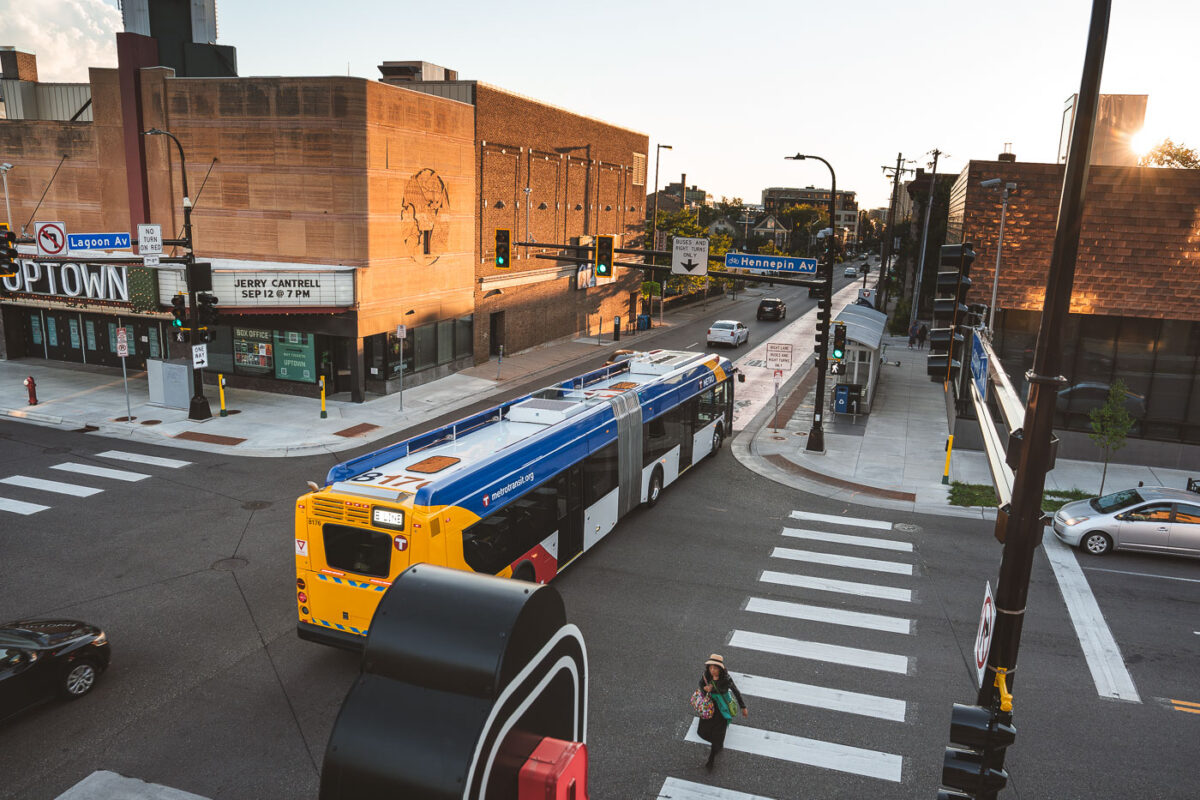
Metro Transit B Line Bus on Hennepin Ave
A Metro Transit B-Line bus crosses Hennepin Avenue in Uptown Minneapolis.
Explore photos and posts tagged Public Transit.

A Metro Transit B-Line bus crosses Hennepin Avenue in Uptown Minneapolis.
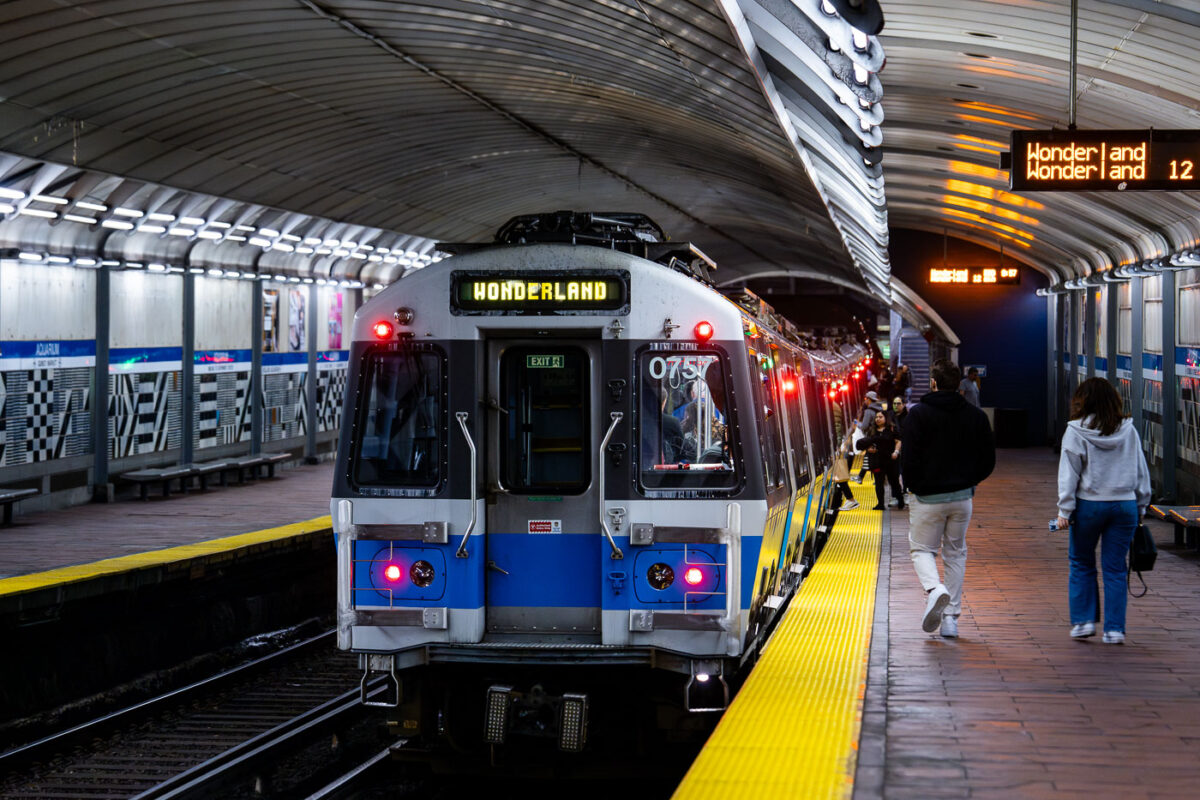
MBTA Wonderland bound train from the Aquarium Station. Passengers on the platform getting on the train.
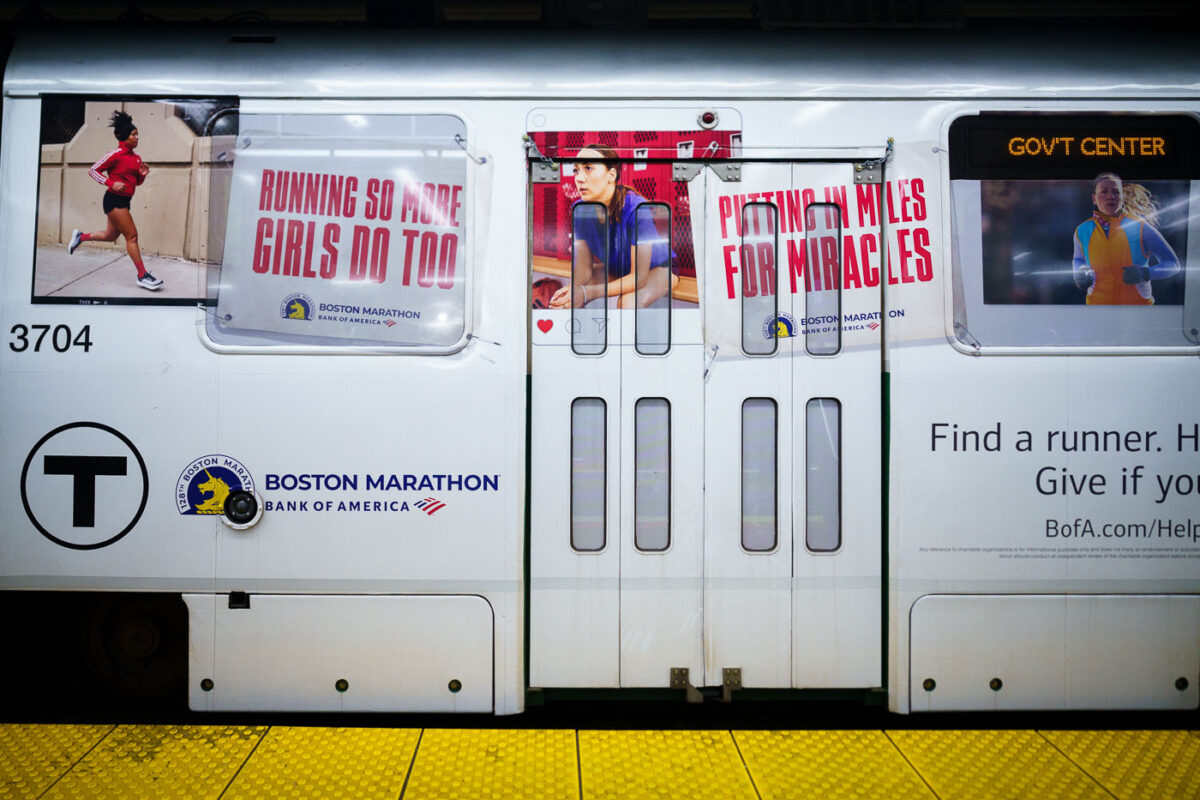
A train with Bank of America Boston Marathon wrap.
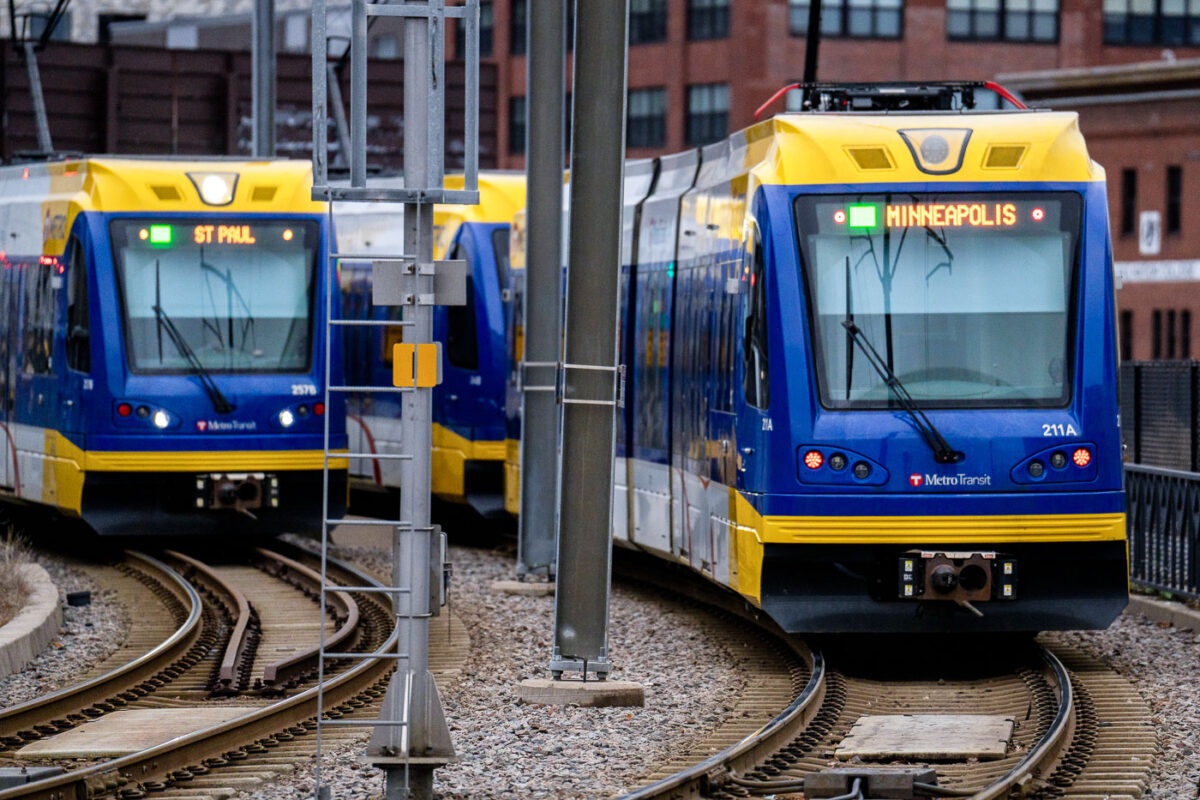
Light Rail trains in Downtown Minneapolis.
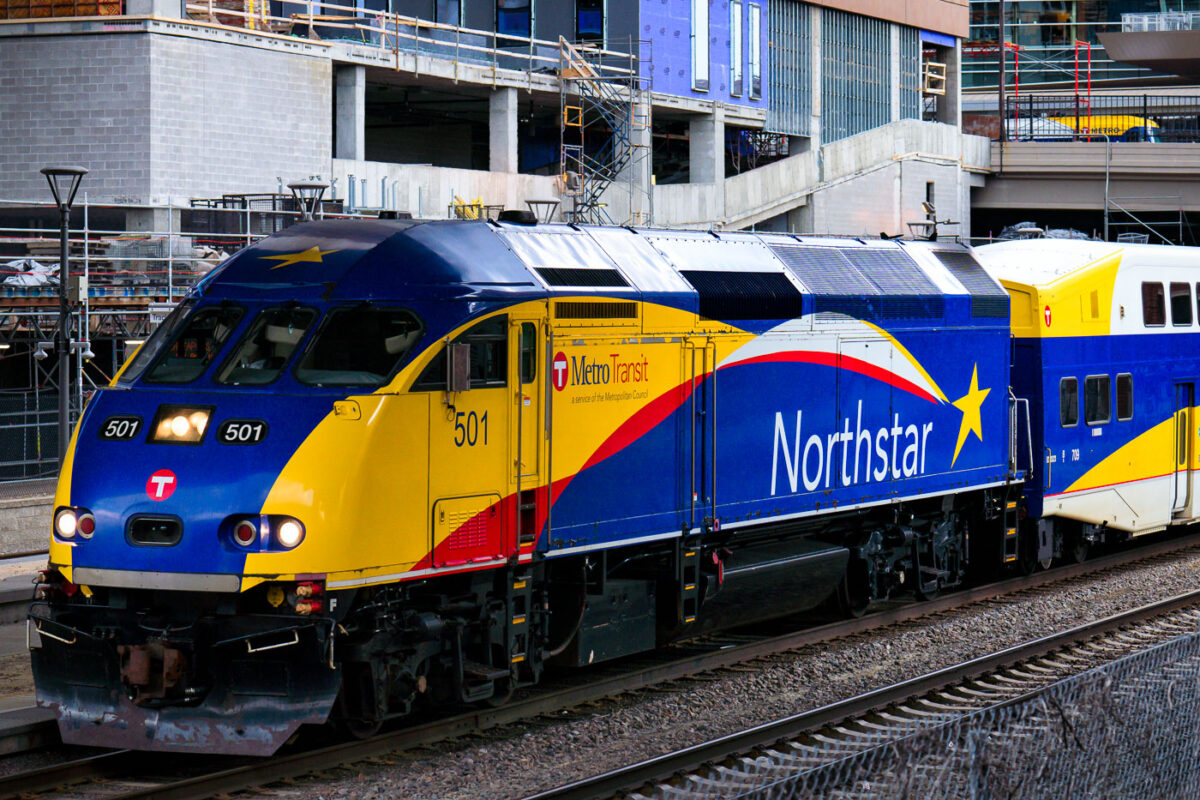
A Northstar Train in downtown Minneapolis.
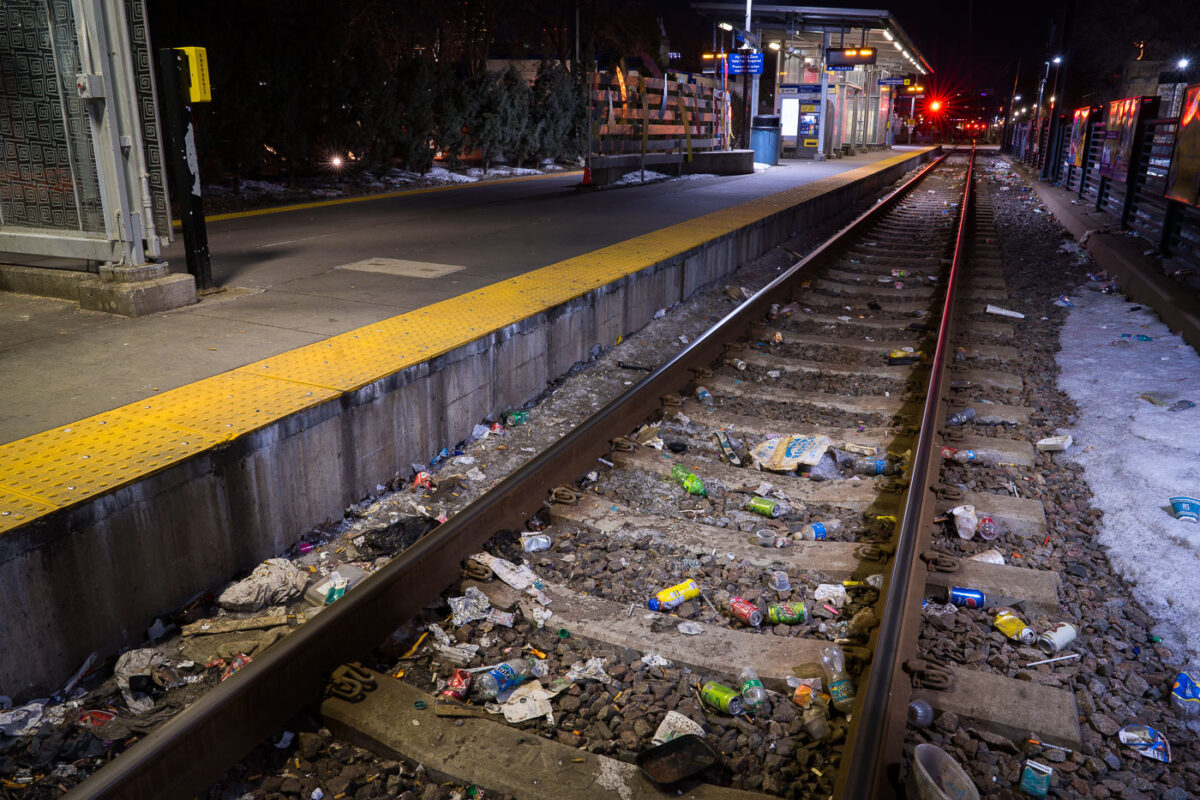
Discarded needles and trash line the tracks at the Cedar-Riverside LRT station.

Multiple sets of railway tracks converge toward the distance beneath a grid of steel catenary supports. A man in a dark suit walks along the yellow tactile line on Platform 4, while another commuter waits across the tracks. Overhead signs mark platform numbers, and signal lights display red and amber. The station canopy and surrounding buildings form an industrial backdrop, with a faint view of hills beyond the city.

New Metro Transit D Line signage on Chicago Avenue in Minneapolis.
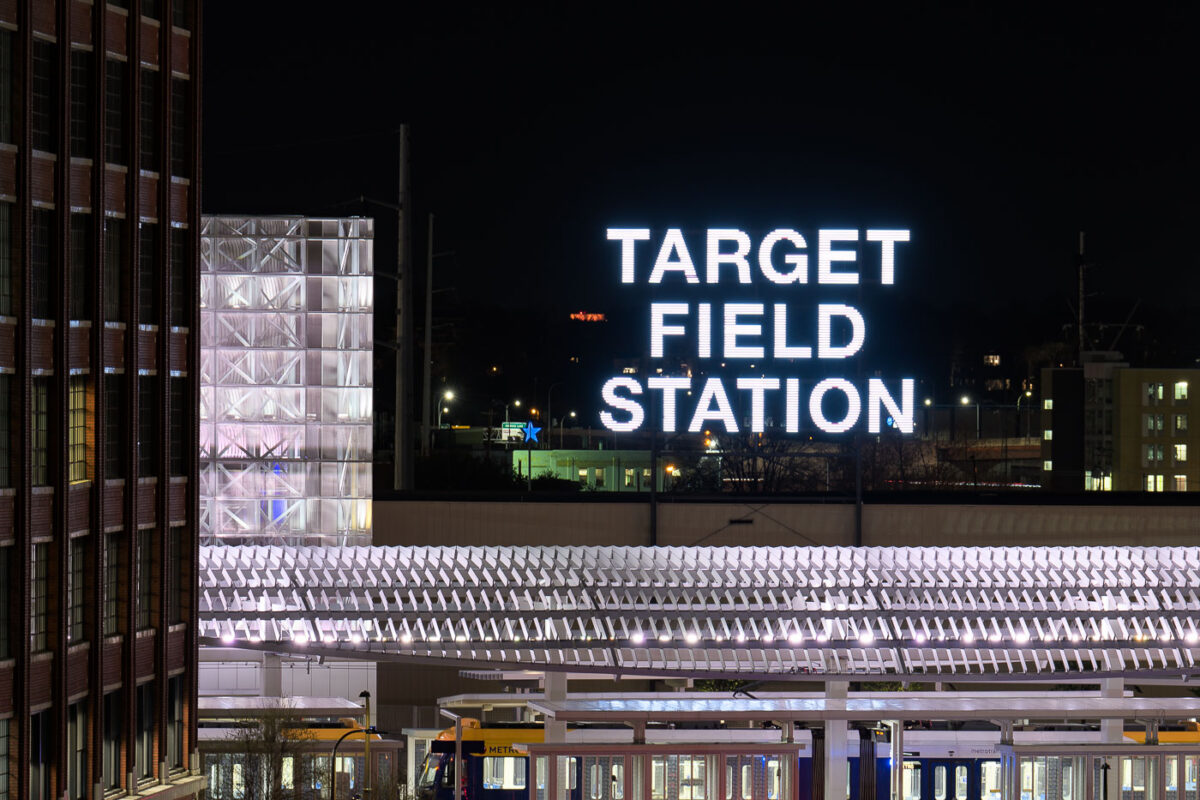
Target Field Station, Minneapolis

Commuters wait on the northbound platform of the I-35W & Lake Street Transit Station in Minneapolis. The elevated structure, completed in 2021 as part of the Orange Line bus rapid transit project, sits above the freeway’s center median and features glass curtain walls, enclosed waiting areas, and real-time NexTrip displays. Evening sunlight highlights the aluminum framing and sound-barrier panels that shield the station from traffic noise below.
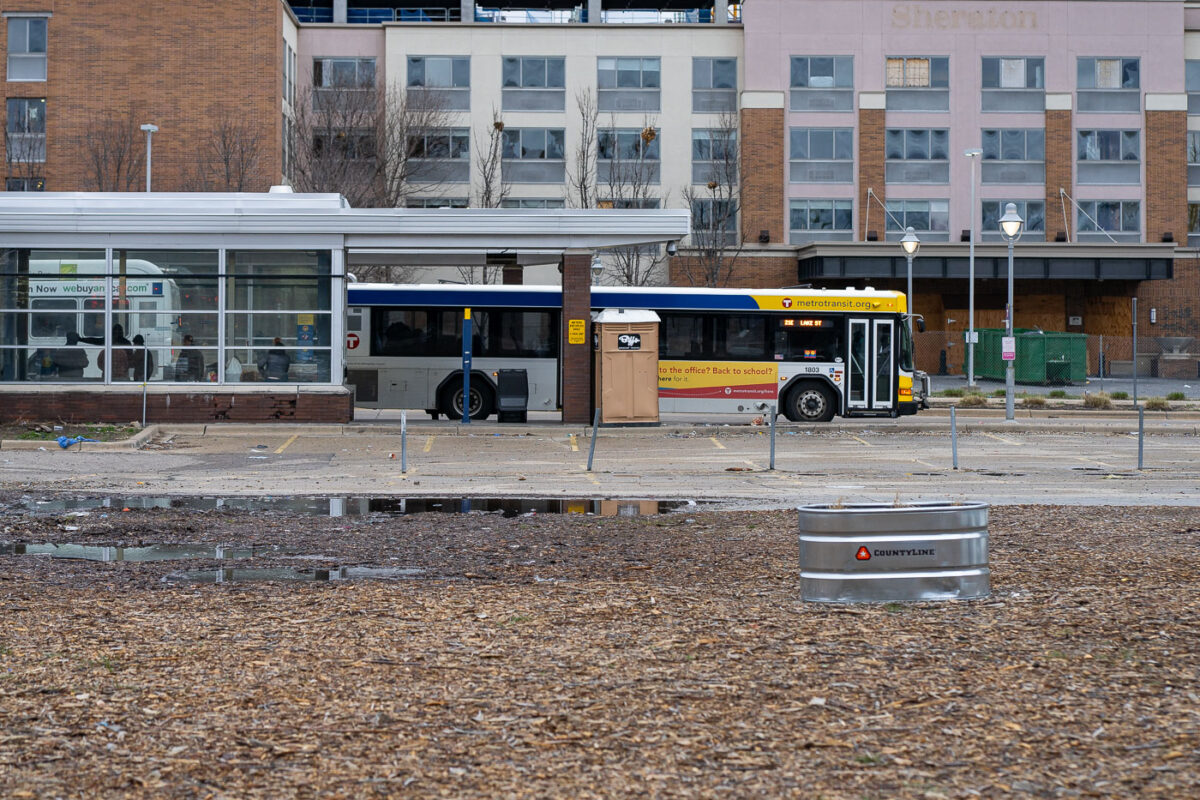
The Chicago Lake Transit Center in South Minneapolis.

Signage for new Metro Transit D-line bus coming to Chicago Avenue in South Minneapolis.
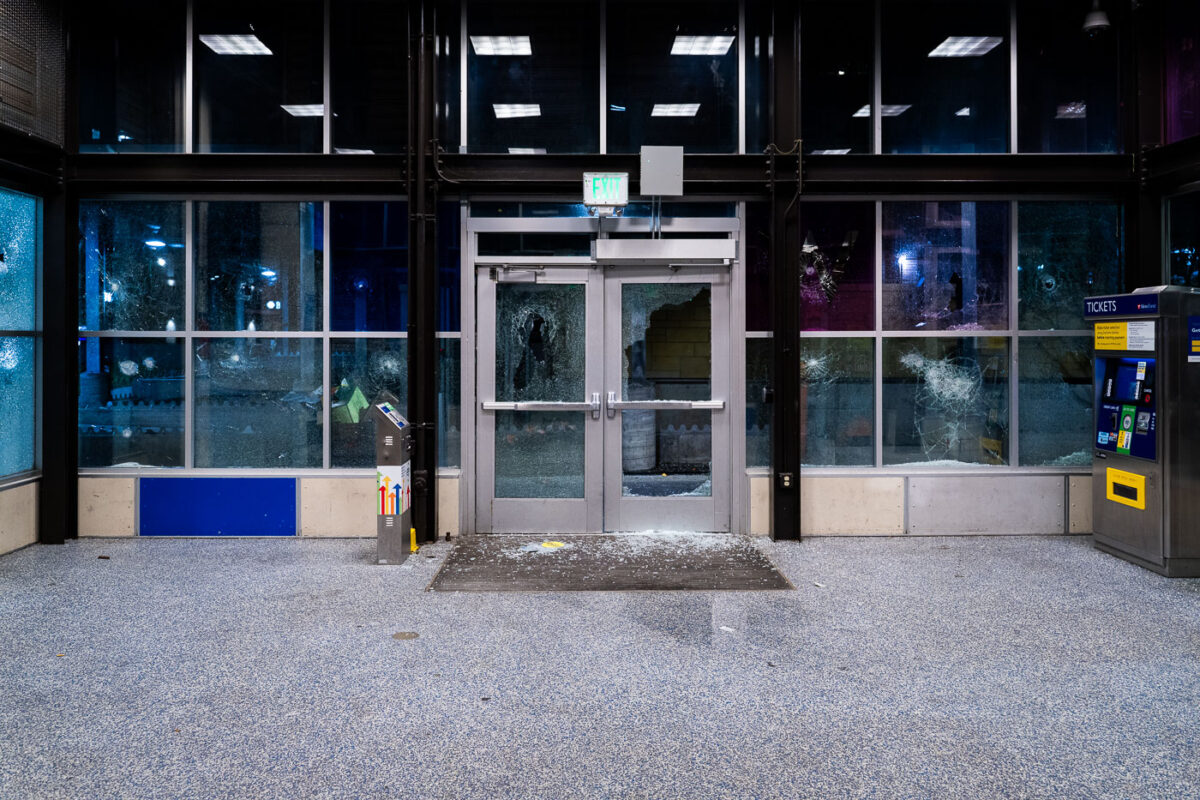
Broken windows at the Lake Street/Midtown Light Rail Station on May 28, 2020 during the 3rd day of protests in Minneapolis following the death of George Floyd.

Broken windows on May 28, 2020 at the Lake Street/Midtown Station on the 3rd day of protests in Minneapolis following the death of George Floyd.
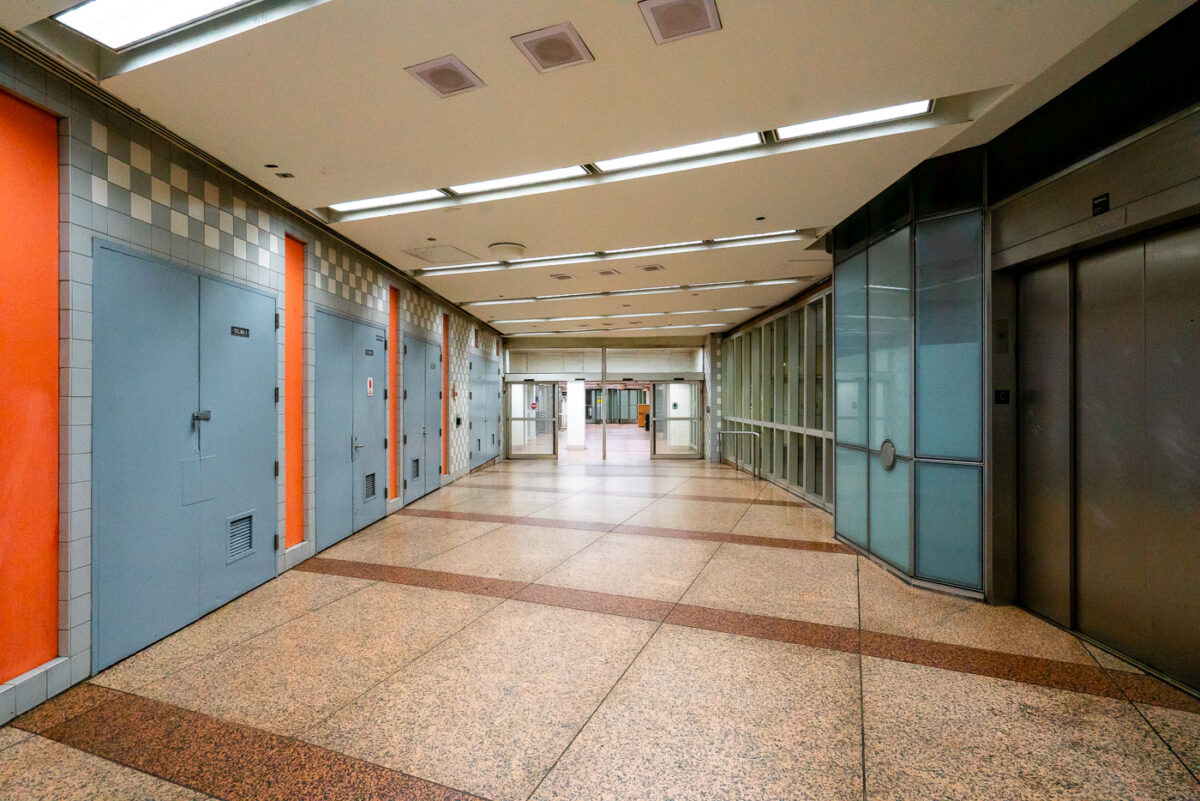
An empty corridor of the Chicago Pedway connects the Randolph/Washington subway station to surrounding office buildings and shopping centers beneath the Loop. The Pedway system, developed beginning in the 1950s, extends for more than 40 city blocks, linking major transit lines with civic and commercial spaces. Its mid-century design—terrazzo floors, tiled walls, and fluorescent lighting—reflects the city’s practical approach to all-weather pedestrian infrastructure, a defining feature of downtown Chicago’s urban core.

The curved platform of a Chicago Transit Authority Blue Line station reveals the utilitarian design of the city’s subway infrastructure, part of the Milwaukee–Dearborn subway opened in 1951. The tunnel’s tiled blue panels and low arched ceiling reflect the postwar engineering era that brought rapid transit beneath the Loop and the West Side, connecting O’Hare International Airport to downtown. Despite its age, this corridor remains a vital artery in Chicago’s daily commuter network, a symbol of mid-century urban mobility still in constant motion beneath the city streets.
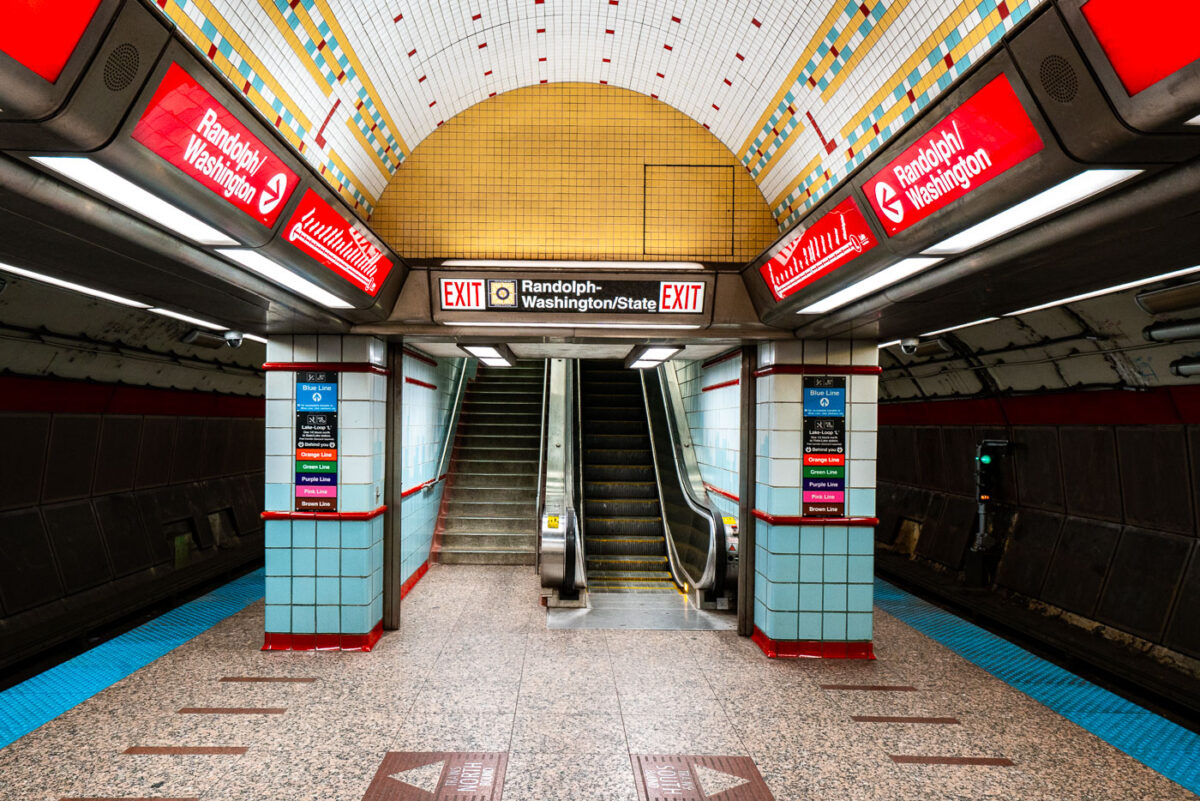
Randolph/Washington station sits beneath the heart of downtown Chicago, forming part of the CTA Red Line that runs through the State Street subway. Opened in 1943 as part of the city’s ambitious subway expansion, the station connects directly to the extensive Chicago Pedway system, linking offices, retail centers, and civic buildings underground. Its tiled vault and distinctive 1940s-era design remain largely intact, representing the Art Moderne phase of Chicago’s transit infrastructure.
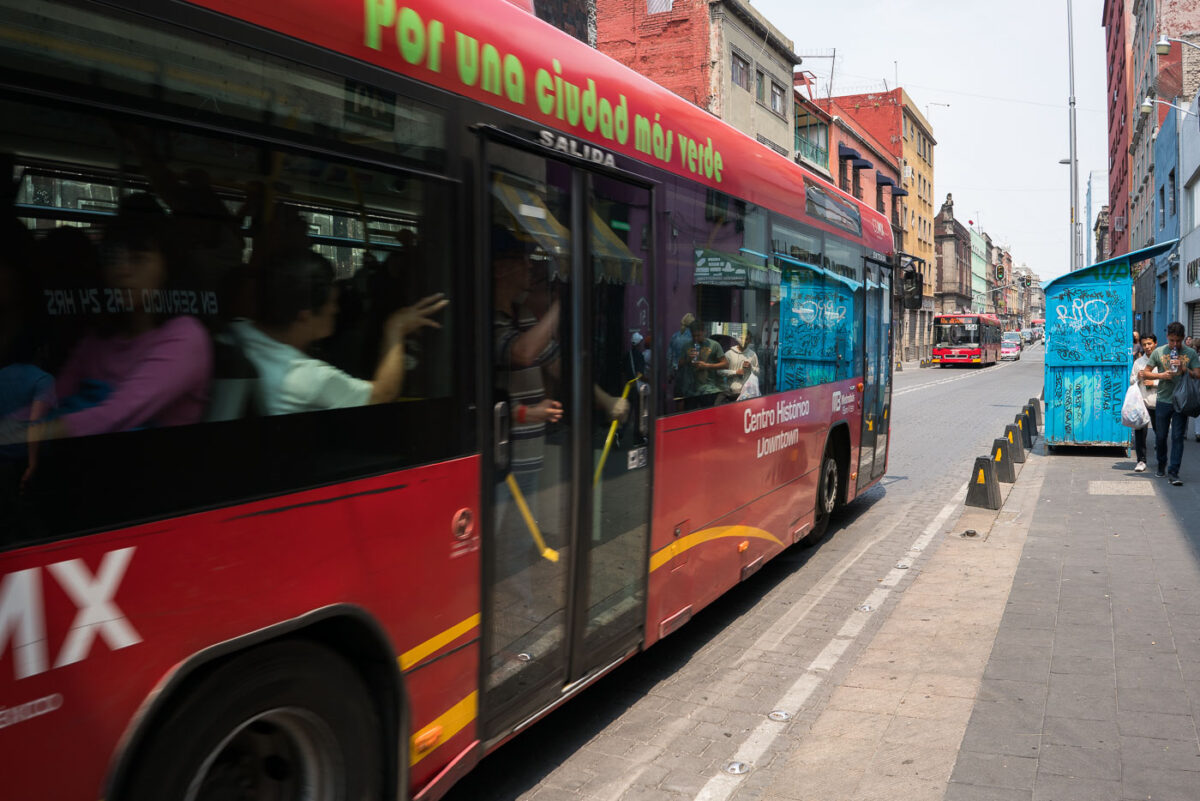
A Mexico City Metrobus on Line 4 passes through the narrow streets of the Centro Histórico, heading toward the San Lázaro terminus. This route, introduced in 2012, was designed to connect the downtown core with the city’s main transit hubs and the airport while reducing congestion in one of Latin America’s most crowded historic districts. The red articulated buses operate along corridors like República de Uruguay and República de El Salvador, part of an effort to modernize and green urban mobility.
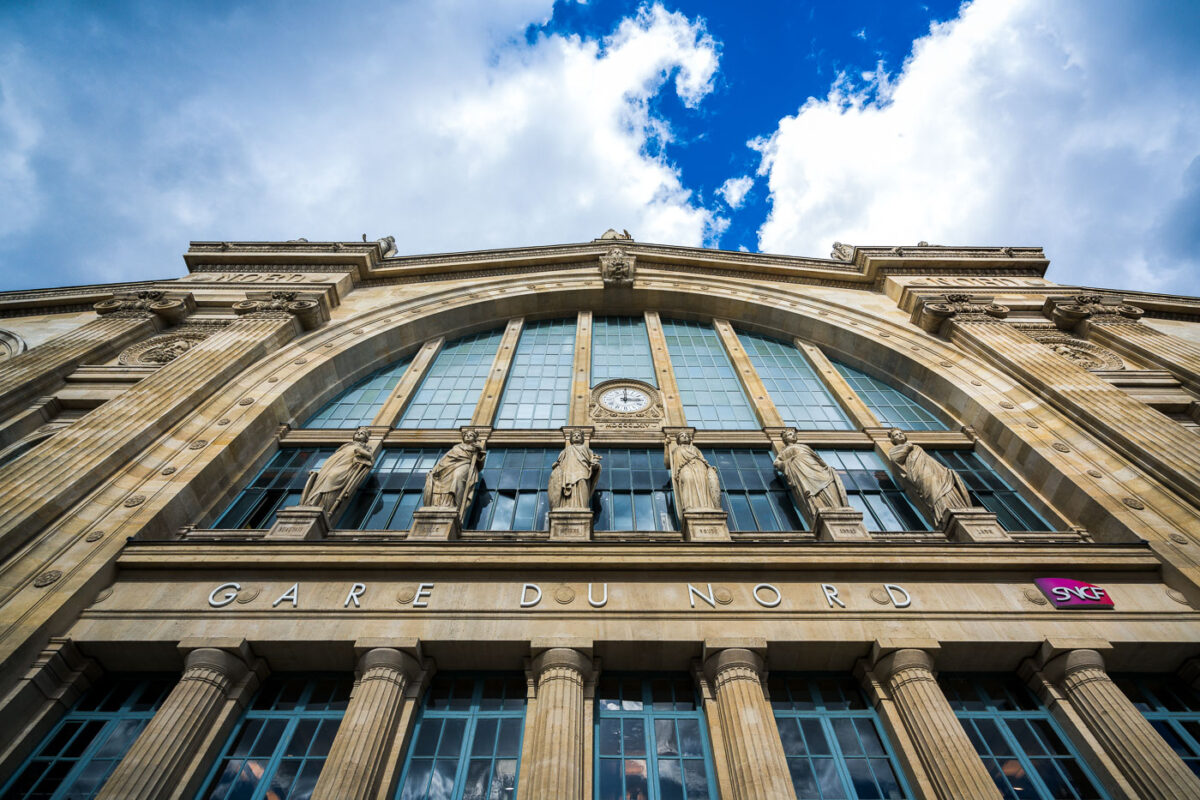
Gare du Nord’s monumental Beaux‑Arts facade is pictured from street level in the 10th arrondissement of Paris, France. The stone frontage features tall arched windows, a central clock, and a row of allegorical statues that represent major European cities historically served by the station’s routes. The inscription “GARE DU NORD” is set above fluted columns, and a magenta SNCF logo marks the national rail operator; cumulus clouds break over a blue sky above the cornice. Opened in the 1860s and designed by architect Jacques-Ignace Hittorff, Paris-Nord is among Europe’s busiest rail hubs, linking regional Transilien lines, RER services, the Paris Métro, and international trains including the Eurostar to London. The station has long served as a gateway for commuters and cross‑border travelers, reflecting the growth of rail travel in northern Europe since the 19th century.

Kurt-Schumacher-Platz station serves Berlin’s U6 U-Bahn line in the Reinickendorf district, located in the city’s northwest. Opened on May 3, 1956, the station was part of the first postwar U-Bahn expansion and named after German statesman Kurt Schumacher, a key figure in rebuilding the Social Democratic Party after World War II.
The station features light-colored wall tiles with horizontal gray stripes and minimalist red lettering, reflecting mid-1950s West Berlin design. It includes a central island platform and two tracks, serving as an important stop between Afrikanische Straße and Scharnweberstraße. Above ground, the station connects to several bus routes and lies near the approach to the U6 tunnel under the former Tegel Airport area. Today, it remains a key link for northern Berlin commuters traveling toward the city center.